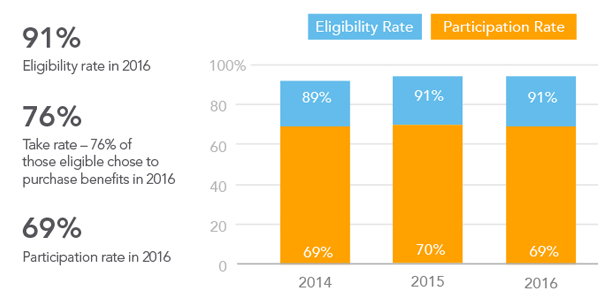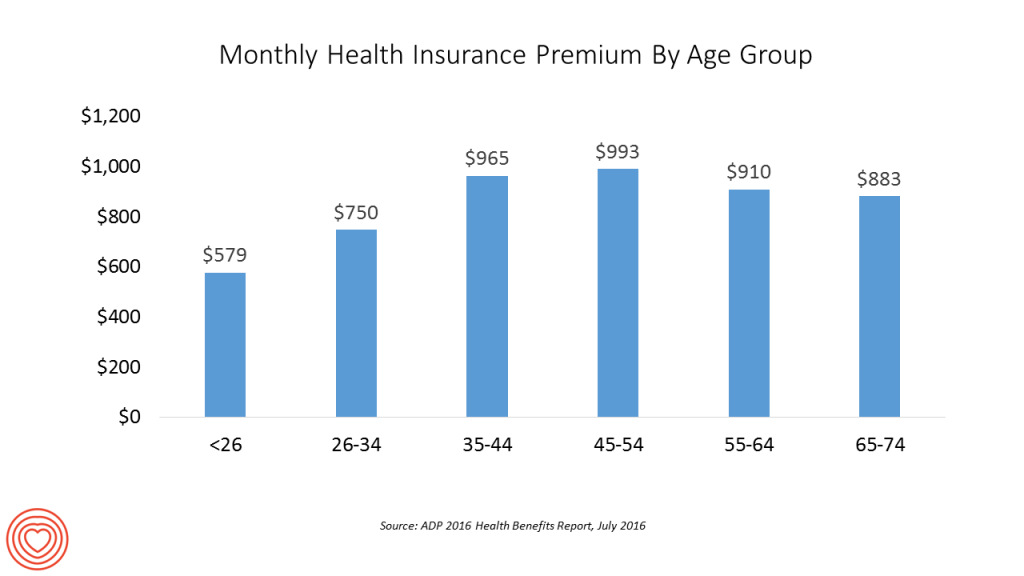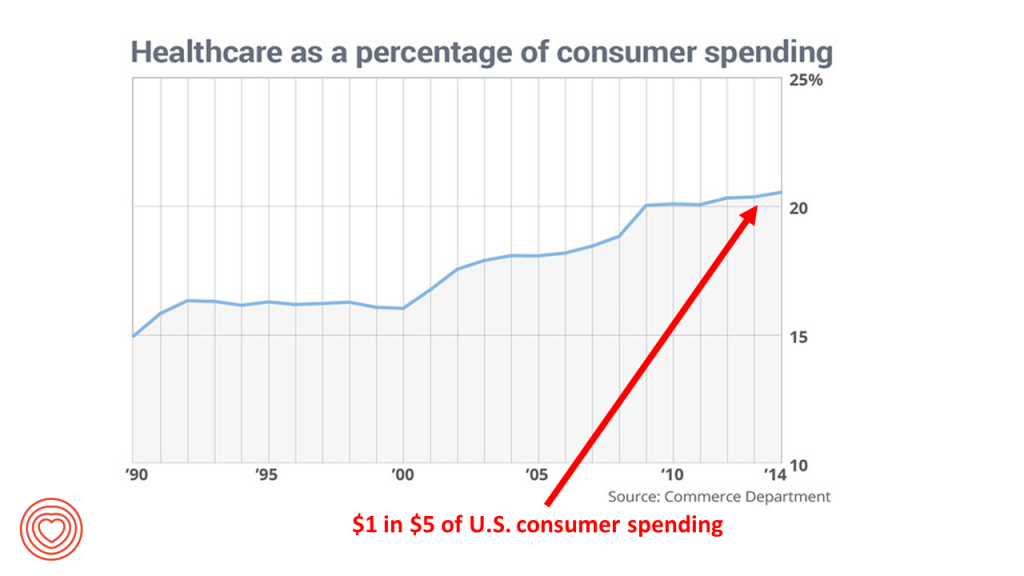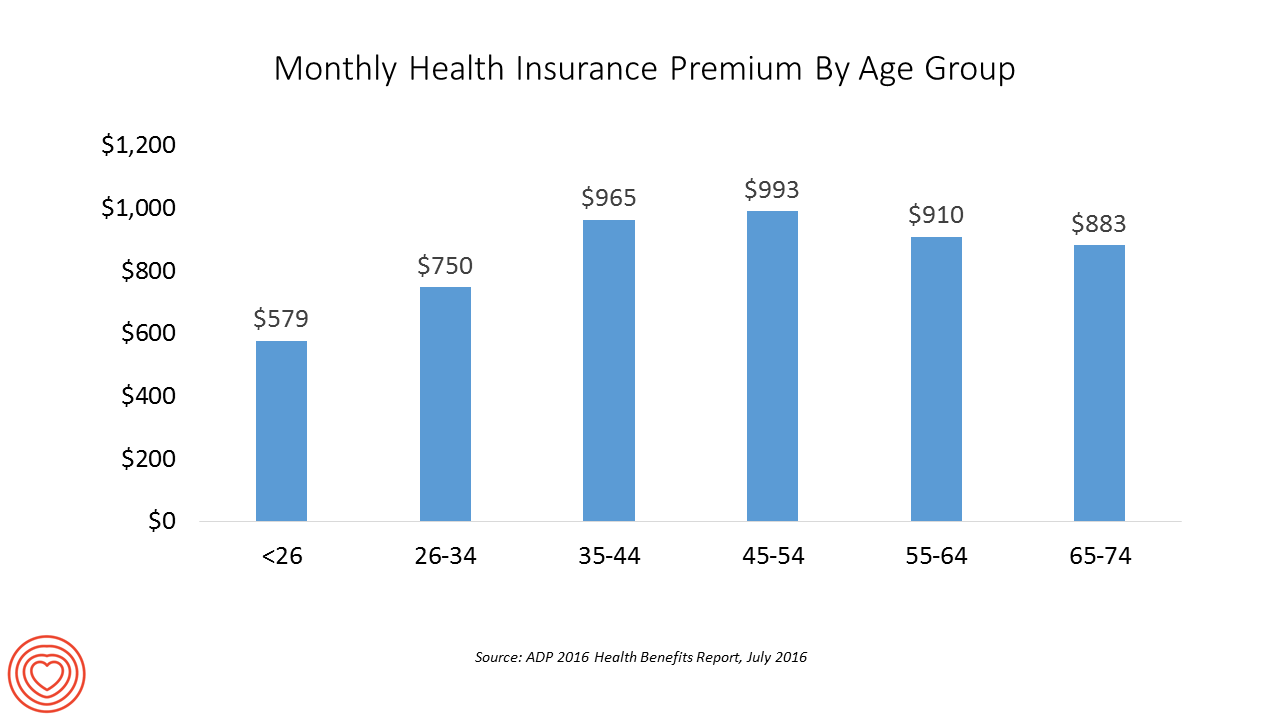
Three years after the launch of the Affordable Care Act (ACA), the big picture of employer-sponsored health benefits in the U.S. show stability, with modest changes in costs being kept in check by a growing younger workforce, according to the 2016 ADP Annual Health Benefits Report.
Roughly 9 in 10 employees in large companies are eligible to participate in health insurance plans at the workplace, with two-thirds of people participating, shown in the chart. Younger people, under 26 years of age, have much lower participation rates than those over 26, with many staying on their parents’ plans (taking advantage of the ACA’s extended dependent coverage provision).

The average total monthly premium reached $885 in 2016, ranging from a low of $579 for the youngest employee group under 26, reaching a high of $993 for people ages 45-54, indicated in the second chart. Premiums grew overall 5% between 2014 and 2016. The largest percentage increase for plan premium between 2014 and 2016 was 6.9% for workers ages 55 to 64.
For individual families, ADP recognizes that, “For different income categories, the average premium is, by and large, above the affordability threshold.”
ADP concludes that, “Overall, the data was noteworthy in its lack of dramatic swings. Employers appear to have made appropriate adjustments to contain costs, while complying with ACA requirements.”
The ADP Research Institute conducted this fourth annual survey among 300 large U.S.-based organizations representing about 700,000 employees.
 Health Populi’s Hot Points: The money quote for me, peering through a health economics lens, is that, “the substantial changes in health care law have entered the consciousness of American workers,” with the concept of “shared responsibility” gaining space in American health citizens’ mindsets.
Health Populi’s Hot Points: The money quote for me, peering through a health economics lens, is that, “the substantial changes in health care law have entered the consciousness of American workers,” with the concept of “shared responsibility” gaining space in American health citizens’ mindsets.
For that health citizen, now increasingly money-conscious health consumer, that 2-8% of family income that’s being allocated from the pocketbook to the health insurance premium is only a tip of the household health cost iceberg: add in deductible amounts, copayments, coinsurance, and all out-of-pockets for health care services and products. You get to 20% of family income. That’s $1 in $5 household dollars for the average U.S. family in 2016.
In this week of the 2016 Democratic National Convention being hosted in my own town of Philadelphia, the cradle of liberty, it’s informative to note that a recent Gallup Poll found that 6 in 10 U.S. voters would vote for a “Bernie-style” health plan: a national, single payer health system. Underneath those “6” are 7 in 10 Democrats, and 4 in 10 Republicans.
Those high premiums and out-of-pocket payments hit all partisans’ families fairly equally. On the docket for the next President: Make the ACA truly “Affordable,” or the candidate running in 2024 will surely be stumping for a single payor health system.





 Interviewed live on BNN Bloomberg (Canada) on the market for GLP-1 drugs for weight loss and their impact on both the health care system and consumer goods and services -- notably, food, nutrition, retail health, gyms, and other sectors.
Interviewed live on BNN Bloomberg (Canada) on the market for GLP-1 drugs for weight loss and their impact on both the health care system and consumer goods and services -- notably, food, nutrition, retail health, gyms, and other sectors. Thank you, Feedspot, for
Thank you, Feedspot, for  As you may know, I have been splitting work- and living-time between the U.S. and the E.U., most recently living in and working from Brussels. In the month of September 2024, I'll be splitting time between London and other parts of the U.K., and Italy where I'll be working with clients on consumer health, self-care and home care focused on food-as-medicine, digital health, business and scenario planning for the future...
As you may know, I have been splitting work- and living-time between the U.S. and the E.U., most recently living in and working from Brussels. In the month of September 2024, I'll be splitting time between London and other parts of the U.K., and Italy where I'll be working with clients on consumer health, self-care and home care focused on food-as-medicine, digital health, business and scenario planning for the future...